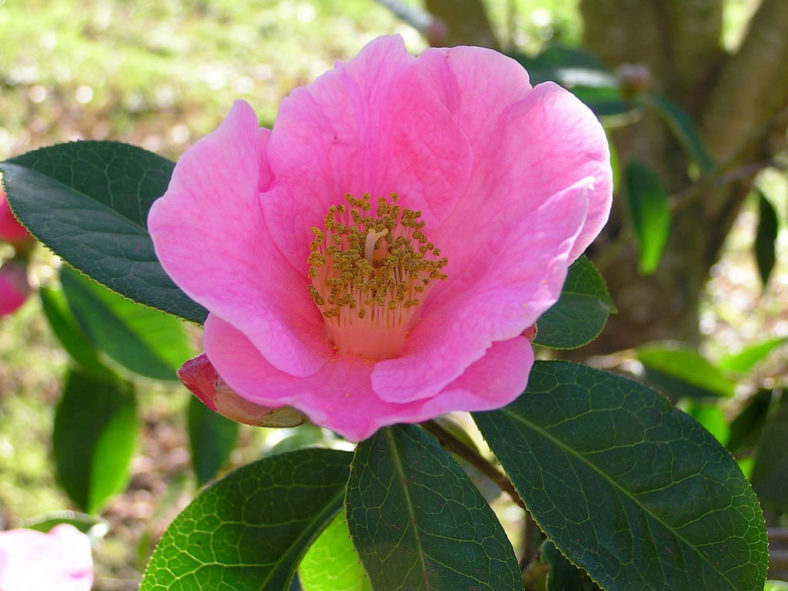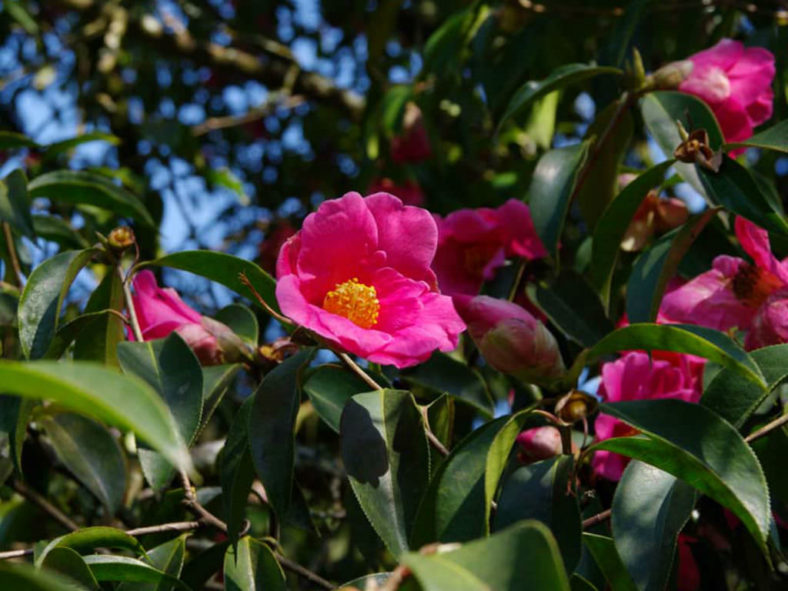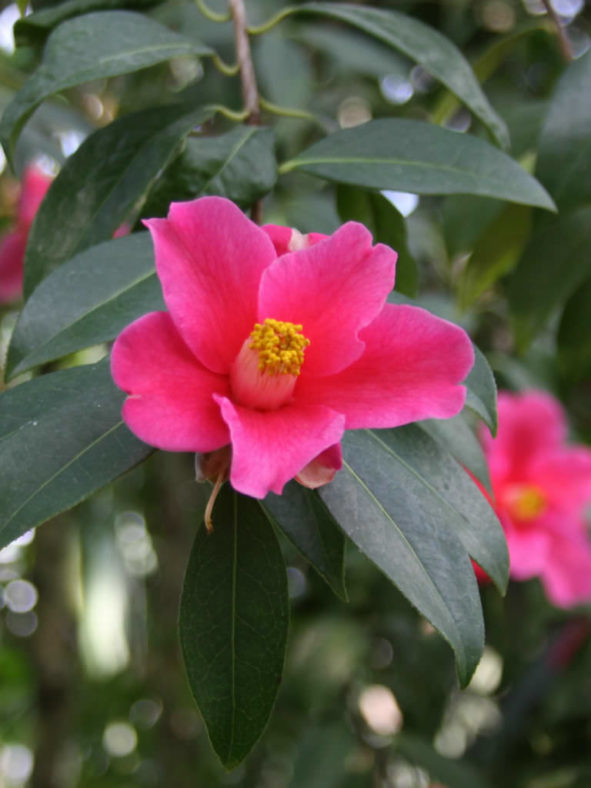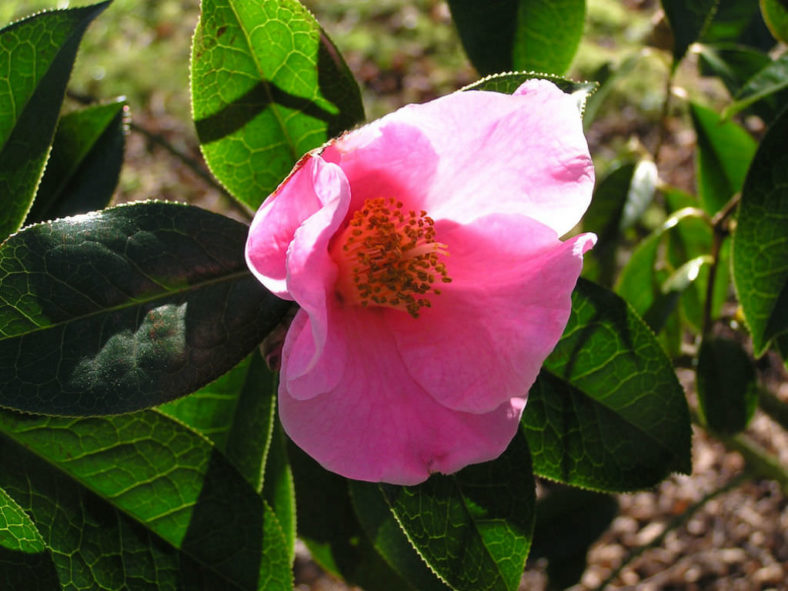Scientific Name
Camellia reticulata Lindl.
Common Name(s)
To-tsubaki, Yunnan Camellia
Synonym(s)
Camellia albescens, Camellia albosericea, Camellia bailinshanica, Camellia bambusifolia, Camellia borealiyunnanica, Camellia brevicolumna, Camellia brevigyna, Camellia brevipetiolata, Camellia chunii, Camellia heterophylla, Camellia huiliensis, Camellia jinshajiangica, Camellia kangdianica, Camellia kweichowensis, Camellia lanosituba, Camellia oligophlebia, Camellia paucipetala, Camellia pentapetala, Camellia pentaphylacoides, Camellia pentaphylax, Camellia phelloderma, Camellia stichoclada, Camellia subliberopetala, Camellia xichangensis, Camellia xylocarpa, Desmitus reticulata, Thea reticulata, Yunnanea xylocarpa
Scientific Classification
Family: Theaceae
Subfamily: Cactoideae
Tribe: Cacteae
Genus: Camellia
Origin
Camellia reticulata is native to southwestern China, in Yunnan Province.
Flower
Color: Pink
Bloom Time: Late winter to mid-spring
Description
Camellia reticulata is a loosely branched shrub or small tree that grows up to 50 feet (15 m) tall. Leaves are elliptic to oblong-elliptic, up to 4.4 inches (11 cm) long, and up to 2.2 inches (5.5 cm) wide. Flowers are up to 4 inches (10 cm) in diameter, soft-pink to deep-pink, and rarely almost white, with 5 to 7 petals. They are produced in sub-terminal or axillary positions on the branch. Fruits are light brown, three-segmented capsules, up to 2 inches (5 cm) in diameter, ripening in the fall.

Hardiness
USDA hardiness zone 8a to 10b: from 10 °F (−12.2 °C) to 40 °F (+4.4 °C).
How to Grow and Care
Choose a large, rugged pot, terracotta, wood, or stone, and part fill with ericaceous compost, and then add your plant and backfill so that the pot's level is level with the soil. Water well, preferably with water taken from a water butt. If you use tap water, which tends to be alkaline, allow it to stand for a morning first.
Repot the plant every other year into fresh potting compost. In the intervening years, remove the top 2 inches (5 cm) of compost and add fresh compost. You can repot back into the same pot if you trim off up to one-third of the roots to make room for fresh potting compost or go up into a larger pot. This regime will keep your Camellia happy.
Camellias are fast-growing tap-rotted plants, and the new growth can snap off in windy positions, so staking is advisable for the first few years until the Camellia becomes bushy. They do tolerate windy conditions, however, once established, and are often used as windbreaks in gardens where they thrive.
See more at How to Grow and Care for Camellia.
Links
- Back to genus Camellia
- Plantpedia: Browse flowering plants by Scientific Name, Common Name, Genus, Family, USDA Hardiness Zone, or Origin
Photo Gallery
Click on a photo to see a larger version.




